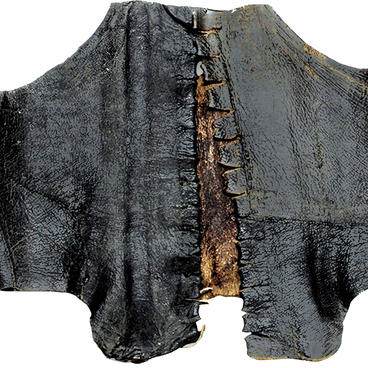Traditional Circassian fans are not at all like either European or Oriental ones. The Adyghes began to use them thousands of years ago: initially, their fans were intended for blowing up the fire in the hearth.
Since ancient times, the cult of fire had occupied an important place in the Adyghe beliefs. Fire was perceived as a living entity, revered as a deity. The phrase ‘May the fire die out in your hearth’ was considered the most terrible curse, since the hearth was directly connected with the lives of the inhabitants of the house. And the fan with which the flame was blown up was considered a sacred attribute.
Later, the fans for hearths turned into fans-flags, which in the Adyghe language were called ‘zhyyf’. They could be of two types: of velvet or straw. They were made on a rigid cardboard base measuring 25 by 30 centimetres. The finished fan was attached to a wooden handle around which it revolved.
Straw ‘zhyyfs’ were decorated with geometric patterns, most often symmetrical. The basis of the images could be simple figures, symbolic representations of animals and birds, which were common in more ancient ornamentalistics, and other signs. Researchers believe that over time masters stopped putting sacred meaning in such patterns and began to combine symbols into single compositions, guided only by their own taste and artistic vision.
Velvet fans were richly decorated with gold threads and galloons, had various patterns embroidered on them. Their ornaments were most often based on plant and animal motifs. Products were decorated with full images of various animals and birds, leaves and whole trees, as well as groves, mountains, streams and other elements of the surrounding landscape. Thus, the Adyghes showed love and respect for the generous nature of their land.
The ‘zhyyf’ presented at the exposition is decorated with the oldest and most valuable kind of gold embroidery – couching. Working in this technique, the craftswoman pricked the pattern on the fabric with a stencil and after that embroidered it without any auxiliary devices. Such embroidery required pinpoint precision, high concentration and a lot of time. For example, a girl could work on a circle of just a few centimetres in diameter for several weeks.
For the Adyghes the fan had never played the role of exclusively ladies’ accessory. Most often it was used to look after the sick. And in the heat, only senior family members could fan themselves with it. Sometimes the fan was placed on the crossbar of the cradle, and when the crib was rocked, the “zhyyf” created a pleasant coolness.
Since ancient times, the cult of fire had occupied an important place in the Adyghe beliefs. Fire was perceived as a living entity, revered as a deity. The phrase ‘May the fire die out in your hearth’ was considered the most terrible curse, since the hearth was directly connected with the lives of the inhabitants of the house. And the fan with which the flame was blown up was considered a sacred attribute.
Later, the fans for hearths turned into fans-flags, which in the Adyghe language were called ‘zhyyf’. They could be of two types: of velvet or straw. They were made on a rigid cardboard base measuring 25 by 30 centimetres. The finished fan was attached to a wooden handle around which it revolved.
Straw ‘zhyyfs’ were decorated with geometric patterns, most often symmetrical. The basis of the images could be simple figures, symbolic representations of animals and birds, which were common in more ancient ornamentalistics, and other signs. Researchers believe that over time masters stopped putting sacred meaning in such patterns and began to combine symbols into single compositions, guided only by their own taste and artistic vision.
Velvet fans were richly decorated with gold threads and galloons, had various patterns embroidered on them. Their ornaments were most often based on plant and animal motifs. Products were decorated with full images of various animals and birds, leaves and whole trees, as well as groves, mountains, streams and other elements of the surrounding landscape. Thus, the Adyghes showed love and respect for the generous nature of their land.
The ‘zhyyf’ presented at the exposition is decorated with the oldest and most valuable kind of gold embroidery – couching. Working in this technique, the craftswoman pricked the pattern on the fabric with a stencil and after that embroidered it without any auxiliary devices. Such embroidery required pinpoint precision, high concentration and a lot of time. For example, a girl could work on a circle of just a few centimetres in diameter for several weeks.
For the Adyghes the fan had never played the role of exclusively ladies’ accessory. Most often it was used to look after the sick. And in the heat, only senior family members could fan themselves with it. Sometimes the fan was placed on the crossbar of the cradle, and when the crib was rocked, the “zhyyf” created a pleasant coolness.



